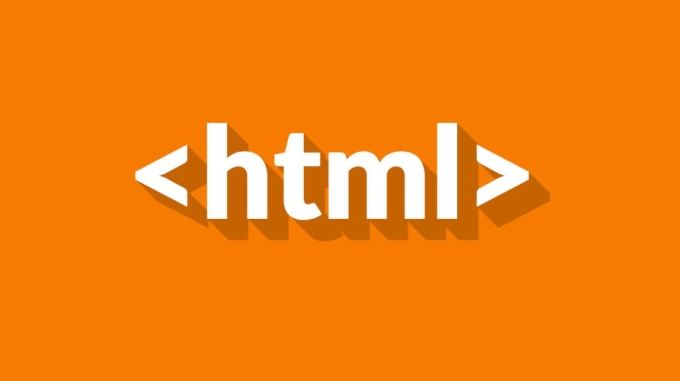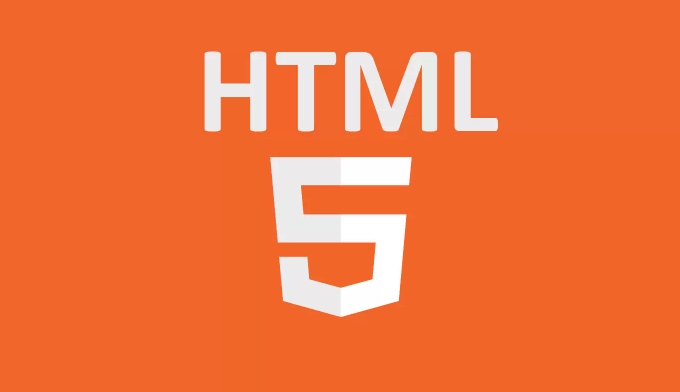nofollow is an attribute in HTML that controls whether search engines track links. Its function is to prevent weight transfer or crawlers from crawling target pages. Common usage scenarios include: 1. Links in user-generated content; 2. Advertising or sponsored links; 3. Links from untrusted sources; 4. Internal functional links. In addition, there are many rel attribute variants, such as nofollow noopener, sponsored, ugc and noreferrer, which can be used to express link intent more accurately. It should be noted that nofollow does not completely prevent search engines from crawling pages, and should not be abused to avoid affecting normal recommendations. The rational use of nofollow helps optimize the website structure and improve SEO results.

In search engine optimization (SEO), the nofollow attribute is a common but misunderstood label. It tells search engines not to track a link or not to pass weights to the target page. For web administrators and content creators, correct use of nofollow can help control the index behavior and link value allocation of websites.

What is nofollow ?
nofollow is an attribute value of the <a></a> tag in HTML, usually written as rel="nofollow" . Its purpose is to tell search engines to "don't crawl along this link" or "not recommend this link". For example:
<a href="https://example.com" rel="nofollow">External link</a>
With this attribute added, search engines such as Google do not usually use the link as a ranking signal to evaluate the target page.

When should nofollow be used?
The following situations are suitable for use of nofollow :
- Links in user-generated content : such as links to forums, comment areas, social media, etc., may pose a risk of spam.
- Advertising or sponsored links : According to Google's guidelines, paid links must be
nofolloworsponsored. - Untrusted links : If you are not sure whether the other party’s website is safe or of the quality, it is best to add
nofollow. - Internal purpose links : for example, functional links such as paging, sorting, and filtering. You can also consider them when you don’t want search engines to crawl.
These practices not only prevent search engines from misjudging the quality of your website, but also reduce unnecessary spider crawling pressure.

What are the variants of nofollow ?
In addition to the standard rel="nofollow" , there are several more subdivided values that can be used with:
-
rel="nofollow noopener": used to prevent security issues caused by opening links in new windows. -
rel="noopener": When used alone, it is mainly used to prevent "tabnabbing" attacks, and often appears together withtarget="_blank". -
rel="noreferrer": prevents the browser from sending Referer header information when redirecting. -
rel="sponsored": links specifically used to label ads or sponsored nature. -
rel="ugc": means a link in user-generated content, such as forum posts or comments.
You can use these values in combination, such as:
<a href="https://example.com" rel="nofollow sponsored">sponsored link</a>
This way the search engines will be more clear about your attitude towards this link.
Common misunderstandings and precautions
Many people think that as long as nofollow is added, search engines will not crawl that page at all. In fact, this is not the case - Google may still crawl the page, but it will not "inherit" the ranking weight through the link.
In addition, some websites abuse nofollow , resulting in the content recommended normally being ignored, which in turn affects the exposure opportunities of partners or linked parties.
The recommended approach is:
- Do not add
nofollowto all external links, only for parts that are risky or do not comply with SEO guidelines. - For trusted partners and resource sites, "natural"
dofollowlinks can be retained. - Regularly check the link status and attribute settings in the website, especially content automatically generated by CMS or blog platforms.
Basically that's it. nofollow in HTML is not complicated, but details are easily overlooked in practical applications. Mastering its usage scenarios and variants will make you more comfortable when optimizing your website.
The above is the detailed content of HTML `nofollow` Attribute for Links. For more information, please follow other related articles on the PHP Chinese website!

Hot AI Tools

Undress AI Tool
Undress images for free

Undresser.AI Undress
AI-powered app for creating realistic nude photos

AI Clothes Remover
Online AI tool for removing clothes from photos.

Clothoff.io
AI clothes remover

Video Face Swap
Swap faces in any video effortlessly with our completely free AI face swap tool!

Hot Article

Hot Tools

Notepad++7.3.1
Easy-to-use and free code editor

SublimeText3 Chinese version
Chinese version, very easy to use

Zend Studio 13.0.1
Powerful PHP integrated development environment

Dreamweaver CS6
Visual web development tools

SublimeText3 Mac version
God-level code editing software (SublimeText3)
 Applying Semantic Structure with article, section, and aside in HTML
Jul 05, 2025 am 02:03 AM
Applying Semantic Structure with article, section, and aside in HTML
Jul 05, 2025 am 02:03 AM
The rational use of semantic tags in HTML can improve page structure clarity, accessibility and SEO effects. 1. Used for independent content blocks, such as blog posts or comments, it must be self-contained; 2. Used for classification related content, usually including titles, and is suitable for different modules of the page; 3. Used for auxiliary information related to the main content but not core, such as sidebar recommendations or author profiles. In actual development, labels should be combined and other, avoid excessive nesting, keep the structure simple, and verify the rationality of the structure through developer tools.
 Implementing Clickable Buttons Using the HTML button Element
Jul 07, 2025 am 02:31 AM
Implementing Clickable Buttons Using the HTML button Element
Jul 07, 2025 am 02:31 AM
To use HTML button elements to achieve clickable buttons, you must first master its basic usage and common precautions. 1. Create buttons with tags and define behaviors through type attributes (such as button, submit, reset), which is submitted by default; 2. Add interactive functions through JavaScript, which can be written inline or bind event listeners through ID to improve maintenance; 3. Use CSS to customize styles, including background color, border, rounded corners and hover/active status effects to enhance user experience; 4. Pay attention to common problems: make sure that the disabled attribute is not enabled, JS events are correctly bound, layout occlusion, and use the help of developer tools to troubleshoot exceptions. Master this
 Configuring Document Metadata Within the HTML head Element
Jul 09, 2025 am 02:30 AM
Configuring Document Metadata Within the HTML head Element
Jul 09, 2025 am 02:30 AM
Metadata in HTMLhead is crucial for SEO, social sharing, and browser behavior. 1. Set the page title and description, use and keep it concise and unique; 2. Add OpenGraph and Twitter card information to optimize social sharing effects, pay attention to the image size and use debugging tools to test; 3. Define the character set and viewport settings to ensure multi-language support is adapted to the mobile terminal; 4. Optional tags such as author copyright, robots control and canonical prevent duplicate content should also be configured reasonably.
 Best HTML tutorial for beginners in 2025
Jul 08, 2025 am 12:25 AM
Best HTML tutorial for beginners in 2025
Jul 08, 2025 am 12:25 AM
TolearnHTMLin2025,chooseatutorialthatbalanceshands-onpracticewithmodernstandardsandintegratesCSSandJavaScriptbasics.1.Prioritizehands-onlearningwithstep-by-stepprojectslikebuildingapersonalprofileorbloglayout.2.EnsureitcoversmodernHTMLelementssuchas,
 HTML for email templates tutorial
Jul 10, 2025 pm 02:01 PM
HTML for email templates tutorial
Jul 10, 2025 pm 02:01 PM
How to make HTML mail templates with good compatibility? First, you need to build a structure with tables to avoid using div flex or grid layout; secondly, all styles must be inlined and cannot rely on external CSS; then the picture should be added with alt description and use a public URL, and the buttons should be simulated with a table or td with background color; finally, you must test and adjust the details on multiple clients.
 How to associate captions with images or media using the html figure and figcaption elements?
Jul 07, 2025 am 02:30 AM
How to associate captions with images or media using the html figure and figcaption elements?
Jul 07, 2025 am 02:30 AM
Using HTML sums allows for intuitive and semantic clarity to add caption text to images or media. 1. Used to wrap independent media content, such as pictures, videos or code blocks; 2. It is placed as its explanatory text, and can be located above or below the media; 3. They not only improve the clarity of the page structure, but also enhance accessibility and SEO effect; 4. When using it, you should pay attention to avoid abuse, and apply to content that needs to be emphasized and accompanied by description, rather than ordinary decorative pictures; 5. The alt attribute that cannot be ignored, which is different from figcaption; 6. The figcaption is flexible and can be placed at the top or bottom of the figure as needed. Using these two tags correctly helps to build semantic and easy to understand web content.
 What are the most commonly used global attributes in html?
Jul 10, 2025 am 10:58 AM
What are the most commonly used global attributes in html?
Jul 10, 2025 am 10:58 AM
class, id, style, data-, and title are the most commonly used global attributes in HTML. class is used to specify one or more class names to facilitate style setting and JavaScript operations; id provides unique identifiers for elements, suitable for anchor jumps and JavaScript control; style allows for inline styles to be added, suitable for temporary debugging but not recommended for large-scale use; data-properties are used to store custom data, which is convenient for front-end and back-end interaction; title is used to add mouseover prompts, but its style and behavior are limited by the browser. Reasonable selection of these attributes can improve development efficiency and user experience.
 How to handle forms submission in HTML without a server?
Jul 09, 2025 am 01:14 AM
How to handle forms submission in HTML without a server?
Jul 09, 2025 am 01:14 AM
When there is no backend server, HTML form submission can still be processed through front-end technology or third-party services. Specific methods include: 1. Use JavaScript to intercept form submissions to achieve input verification and user feedback, but the data will not be persisted; 2. Use third-party serverless form services such as Formspree to collect data and provide email notification and redirection functions; 3. Use localStorage to store temporary client data, which is suitable for saving user preferences or managing single-page application status, but is not suitable for long-term storage of sensitive information.






